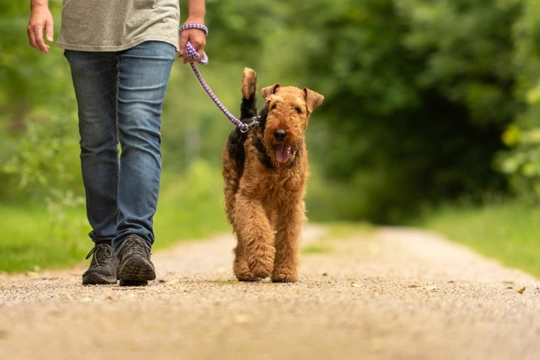
Why you sometimes need to walk each dog alone if you own more than one dog
Owning two dogs doesn’t mean spending twice as long on everything, and when it comes to exercise the two dogs are apt to tire each other out faster through play than if you walked each of them alone. However, it is also important that each dog you own gets walked individually sometimes too, ideally two to three times a week for each dog.
Naturally for most dog owners it would be inconvenient and overly time consuming to walk multiple dog individually for each of their two daily walks, but there are numerous advantages to both the dogs and their owner if you can schedule time to take them out individually on a regular basis.
Read on to find out why you sometimes need to walk your dogs individually if you own two or more dogs.
Each dog needs one on one time and your full attention
When you have two dogs and walk them together, your attention is naturally shared between the two dogs and this is absolutely fine as long as you can control them both too. However, each dog also needs to spend one on one time with their owner to develop and reinforce their bond and enjoy their owner’s full attention, without the other dog present or pushing in.
One dog in a pair will naturally be more dominant, and this doesn’t mean that they’ll necessarily be putting the other dog in their place or even being pushy, but it does mean that the dynamic is different between you and your dogs when you’re all together than it is when you spend time alone with each dog individually.
When you walk each dog separately a couple of times a week, you can give them your full attention and spend quality time with them.
Your dogs will behave slightly differently when apart
As mentioned, the dynamic in a pack situation (even only a pack of two) dictates the dog’s roles and relationships to each other, and they will both behave slightly differently when out on walks without the other party.
The dominant dog might be more chilled out, as the dominant role also means the role of leader and responsible party, and the more submissive dog might be more outgoing and play rather differently too.
This might manifest in simple ways, for instance if one of your dogs always catches the ball and the other one never gets a chance at it, their solo walk can enable them to do so.
It also means that your dogs will get the chance to play with different friends not dictated by the other dog they live with or how keen their housemate is to play.
Regular separation helps to avoid separation anxiety
Dog owners often mistakenly think that separation anxiety only occurs when a dog is parted from their owner, but if you have two dogs and they never spend any time apart, they are prone to become anxious and make a fuss if and when they ever do have to be parted from each other too.
This will naturally be a problem in day to day life, but will become even more acute when one dog eventually dies and leaves the other behind, and this can be very hard to cope with even for dogs that are used to being apart from their deceased housemate.
Separating your dogs and walking them individually a couple of times a week while the other waits at home is an integral part of ensuring that they can cope without each other and will not suffer from acute separation anxiety when parted from the other dog for whatever reason.
Training and obedience
You cannot train two dogs together effectively – one dog and one handler is required to teach a dog new skills. Even if both dogs are very well trained and keen to learn new skills, teaching both together and maintaining control and obedience and paying attention to both dogs equally is impossible.
This applies just as much to adult dogs that are properly trained as it does to young dogs that are still getting to grips with things, as training and maintaining your dog’s skills and obedience is a lifelong process. Dogs need to have their skills refreshed and to work on their commands regularly to keep them in their minds, and to reinforce the importance of doing as they’re asked.
Tailoring walks to each dog’s needs
Finally, even if you own two dogs of the same age and breed, they’re not going to be identical in terms of their needs and preferences. One of them may be more energetic or want to walk for longer than the other, or they’ll enjoy different types of play and activities on their walks.
When you separate your dogs for their walks, you can tailor what you do on those walks to suit each individual dog, rather than having to find middle ground that might not be 100% perfect for either.



